


Finding Innovation Behind the Counter
How we’re working with Panera to create great service experiences


How we’re working with Panera to create great service experiences
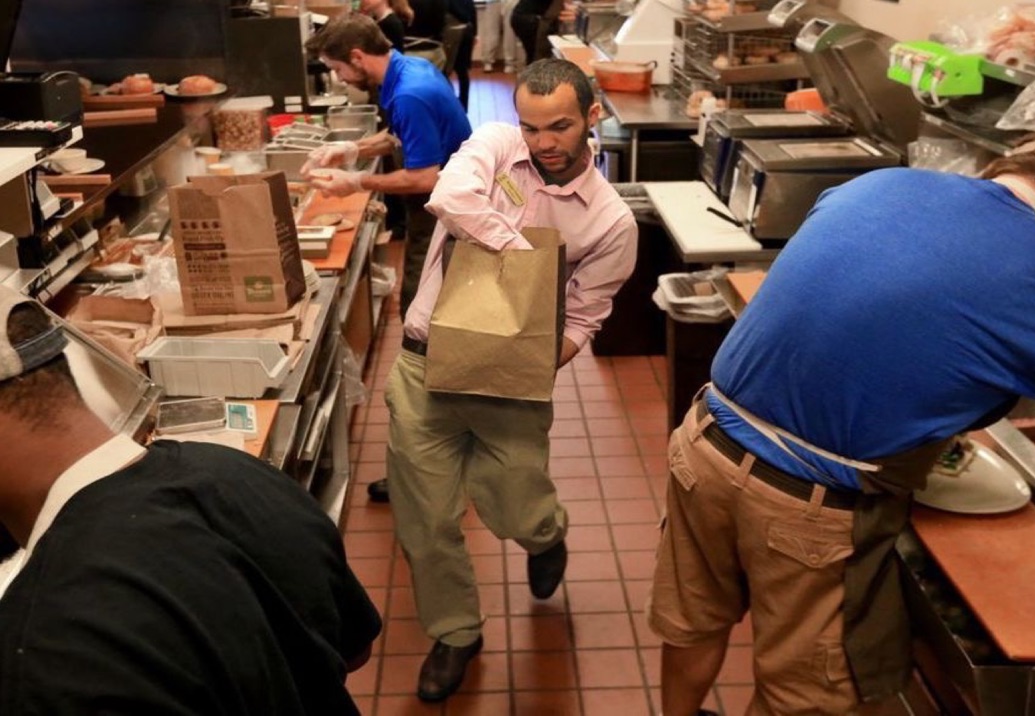
The fast-casual restaurant industry is an interesting space. It's a highly organized, complex system of customer-facing experiences, back-of-house systems, and a business model that operates on razor thin margins. It's also seen unprecented disruption – not just because of COVID – but also because of how digital transformed customer experiences over the last decade . Panera was the pioneer in digitally-driven restaurant experiences and we were lucky enough to be a partner in helping to push new boundaries and find innovation where others couldn't.
Along the way, we learned a lot. Not just how to build great restaurant experiences, but also how we can work better across a range of industries – from healthcare to commerce. The following calls out some of the key ways of working that any business can use to create better customer experiences...
No where it is more evident that brand, technology, and operations are intrinsically connected than in the fast casual restaurant industry. It’s not just for Panera either – we’ve seen this consistently for our work with Dunkin’, Toast, Keurig, and other clients. When it came time for Panera to launch their own delivery service, we were asked to lean in so we could create a delivery experience that brought the Panera brand to life at every touchpoint...
What happens when you let brands like Grubhub, Doordash, and UberEats into your restaurant business to capture an immediate uptick in sales? They start owning the customer relationship, data, and putting more pressure on already-thin restaurant margins. For these reasons, Panera saw the value in a delivery service that could control the end-to-end brand experience.
As a partner in this endeavor, we were asked to help design a branded delivery experience for consumers, as well as ensure that a focus on customer experience was central to the operational side of delivery. The result was a delivery service that launched months ahead of schedule and a gain in operational efficiences in back-of-house systems and cafe operations.
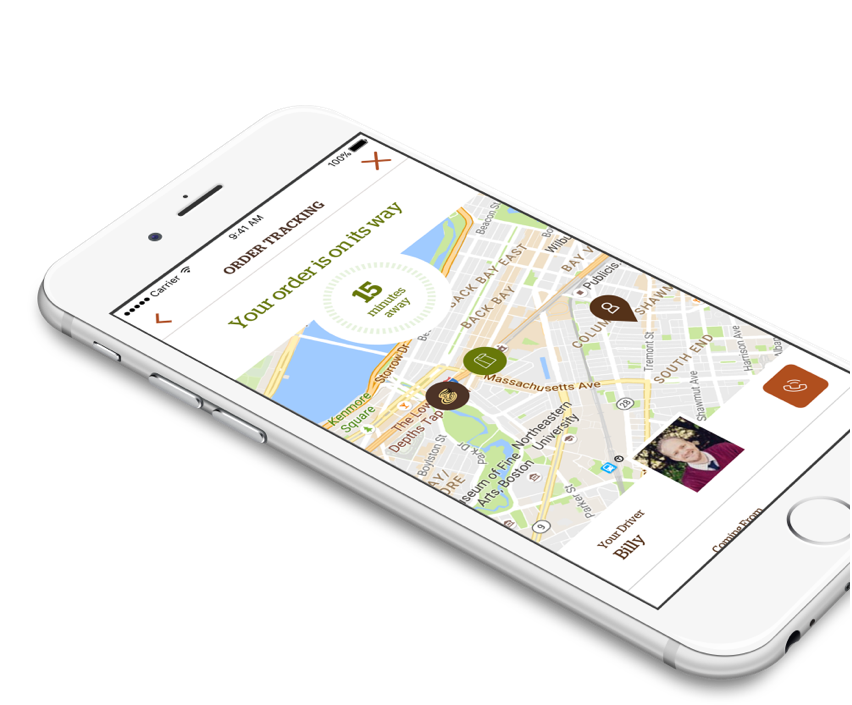
In simple terms, Service Blueprinting is a high-level service map that includes the desired customer journey, operations, and tech systems that are needed to bring the CX to life. A Service Blueprint plays three valuable roles early on: 1) Provides an organized view of the service across marketing, technology, and operational teams, 2) allows teams to view top-level challenges and opportunities across the entire service chain, and 3) can be a central document to help with integrated planning for executional activities.
As we designed the delivery experience, we spent just as much time riding along with delivery drivers and behind the counter with cafe managers so we could better understand the service we were designing for. It didn't just uncover new challenges and opportunities, it ensured that, as we rolled out this new service, that the needs of employees and managers were considered from the start.
Prototyping out ideas for new app designs and operational adjustments was a key activity that was pervasive in almost every stage of the product. Whenever we had an idea, we immediately prototyped it out and put in the hands of customers, delviery drivers, and managers to see how they respond to something that felt real. It ended becoming an amazing tool to help us learn quickly avoid future pitfalls.
Panera built it's success on their ability to capture value through new digital capabilities like kiosks, delivery, web ordering, and cafe operations...but what was once a key differentiator, is now ubiquotous. To rise above in a restaurant economy that's putting more pressure on convenience and points, they needed to find something new...
Did you know Panera has the largest restaurant loyalty program in America – even moreso than Starbucks? They saw this an opportunity to create a loyalty program that transcended transaction-based loyalty programs that are now common for every restaurant brand. Alongside a brand refresh, we help design the new MyPanera loyalty vision that brought their clean eating mission to life.
As a partner in this endeavor, we were asked to help design a branded delivery experience for consumers, as well as ensure that a focus on customer experience was central to the operational side of delivery. The result was a delivery service that launched months ahead of schedule and a gain in operational efficiences in back-of-house systems and cafe operations.
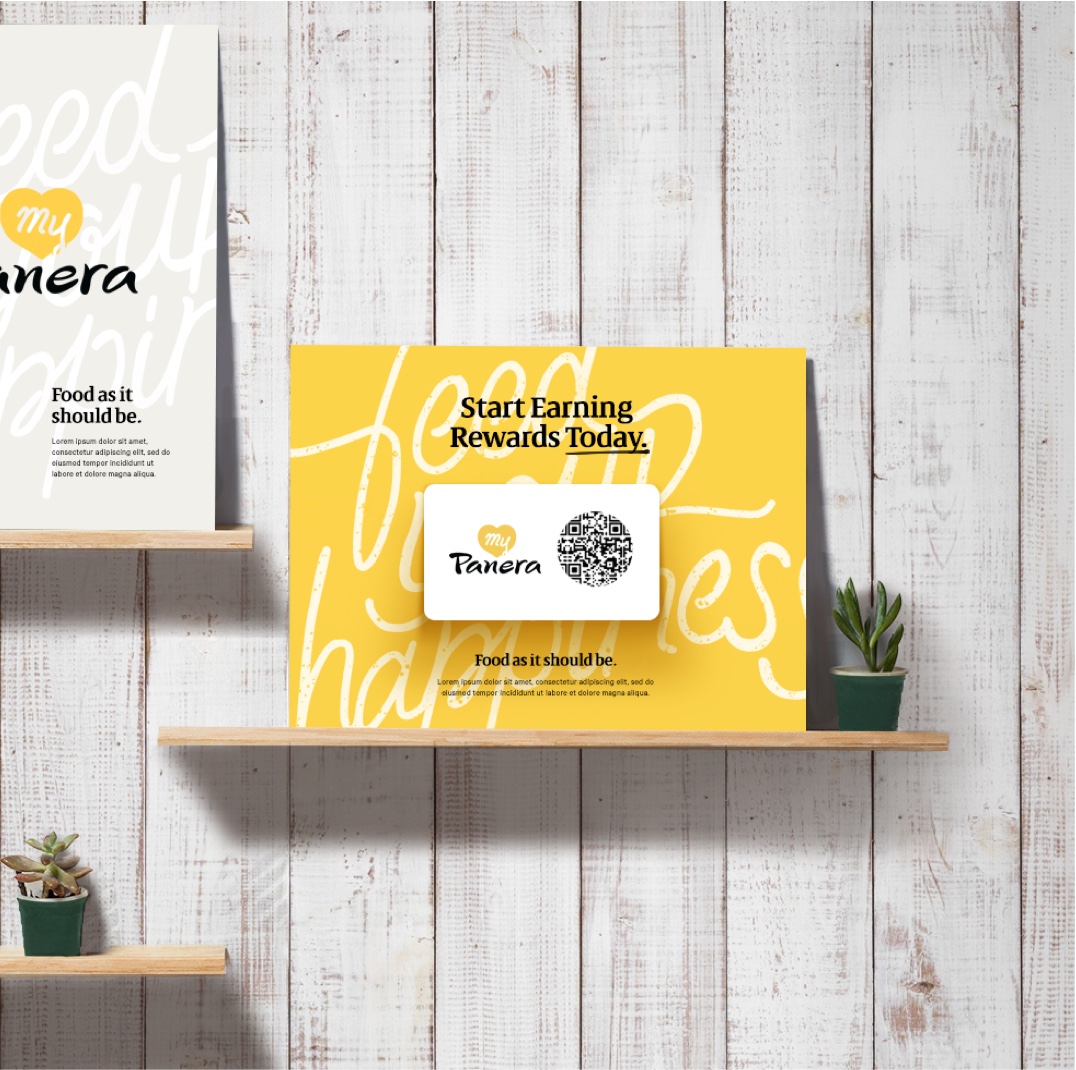
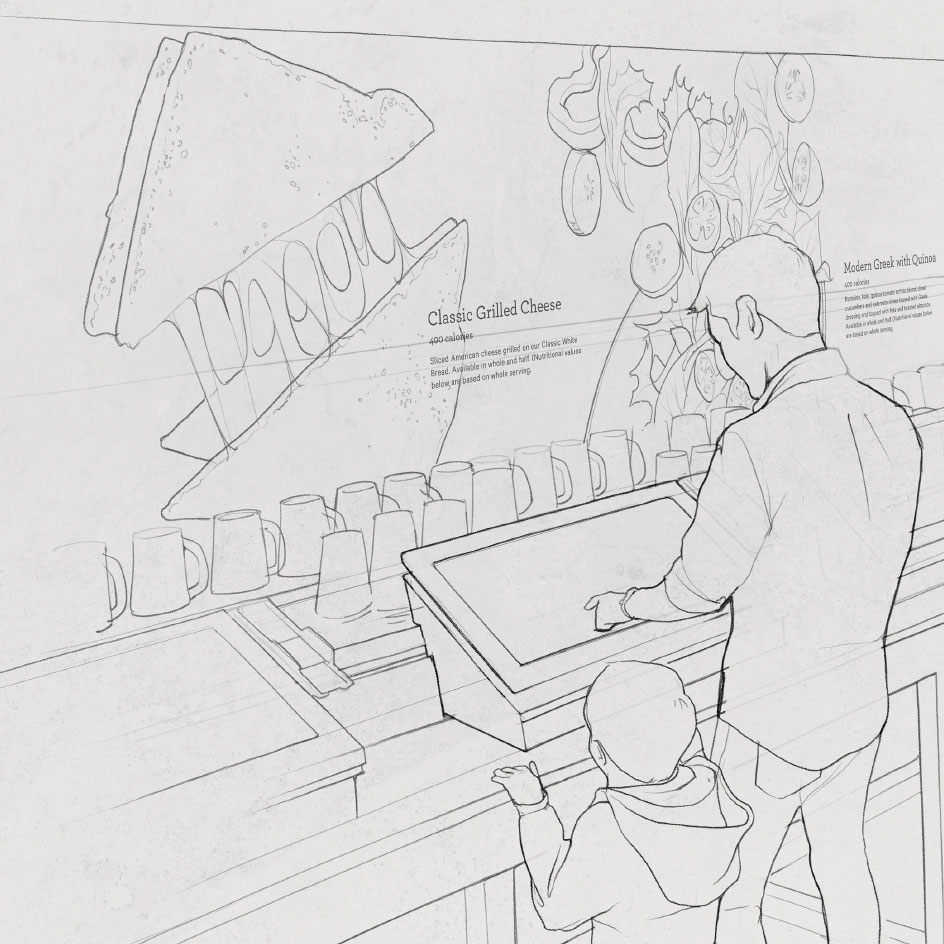
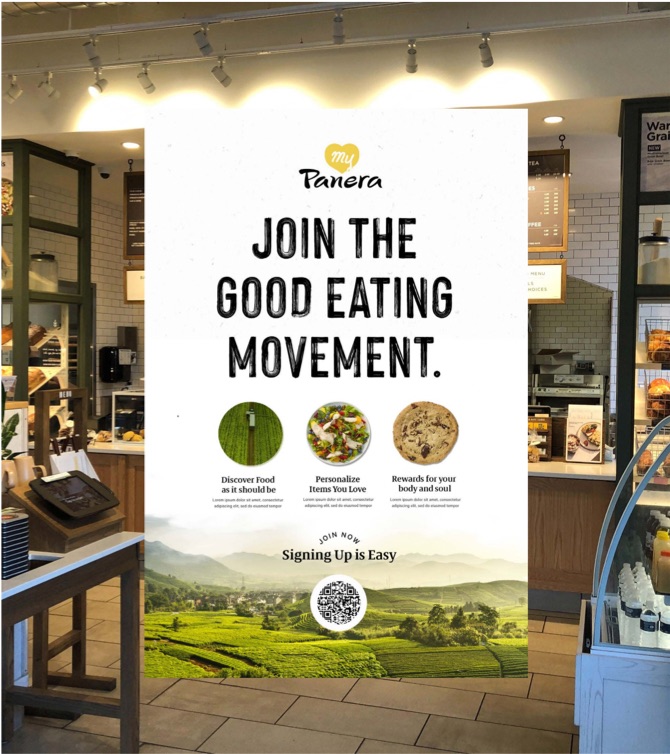
Trying to solve transformational challenges in an incremental way is a recipe for disaster. As part of our Northstar methodology we designed a vision for loyalty that was equal parts customer experience and equal parts employee experience so we could get to an integrated roadmap that all stakeholders could get behind.
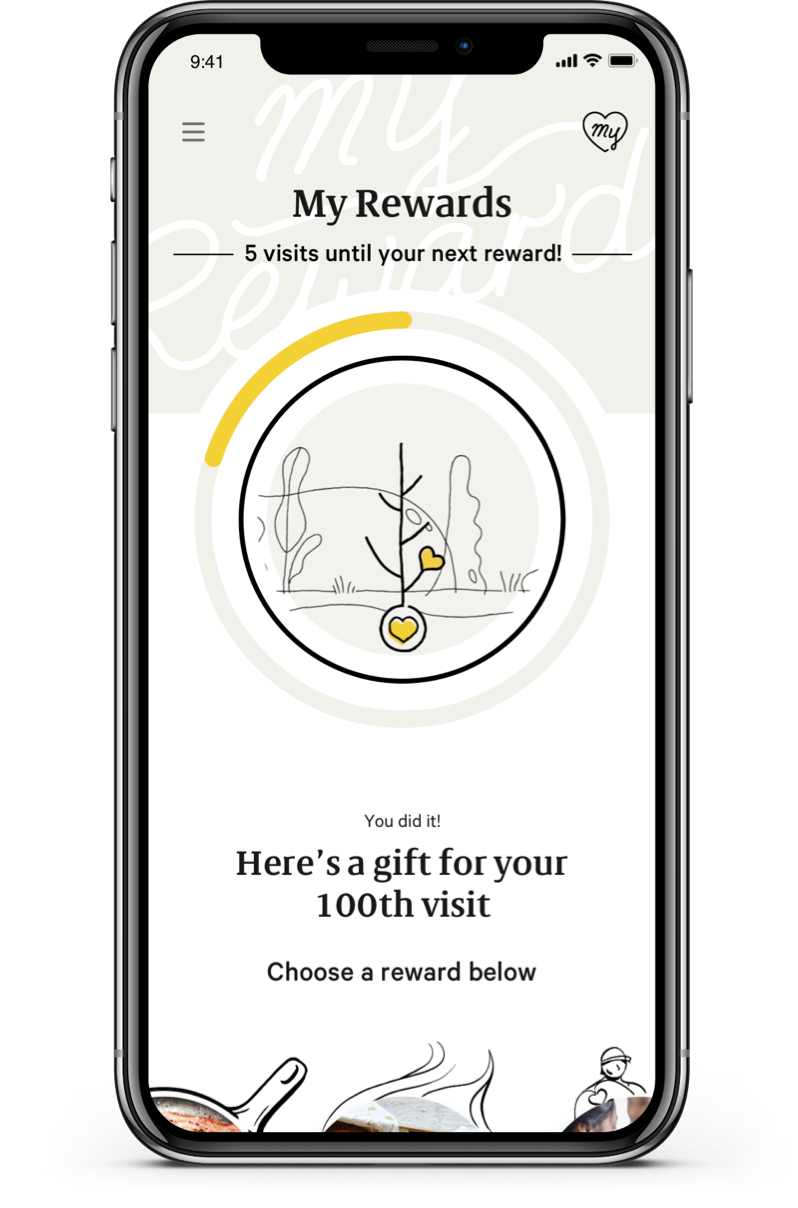
Any brand can offer points based on how you spend, it's not as special as you think it is. Instead you need to dig deeper and find ways to make you're customers feel like they belong to something bigger. We drew inspiration from brands like Nike, REI, and Peloton but ultimately designed an experience that invited customers to become part of a clean eating movement that had the potential to transform how we define healthy and accessible eating.
Great employee experiences lead to great customer experiences. This is especially important in the restaurant space because the average tenure for a line worker is less than a year. So we spent time behind the counter to see how we could tap into new loyalty experiences that involved employees and created an atmosphere that everyone could participate in.
A service delivery chain is the end-to-end process needed to bring a service to life...and they're complex. Like, really complex. They involve different teams with different needs and measurement criteria. They become even more complex when delivering a branded service because marketing teams get thrown into an environment they're not traditionally part of.
While we as marketers may not have permission to lead operational and systems-level efforts, we do have permission to facilitate activities and processes that deliver on an exceptional customer experience that only we can deliver. For Panera, cafe operations were no exception...
As Panera introduced their new delivery offering, they needed yet another order management system (there were already systems for in-store, web, and catering) that cafe managers needed to navigate so they could management throughput. This was the tipping point.
We were invited to prototype a new cafe operations platform that consolidated existing systems into one simple view that cafe managers could more easily manage. This also included a mobile/responsive experience so cafe managers could spend less time in a backroom on a computer and more time on the floor doing what they do best – helping customers.
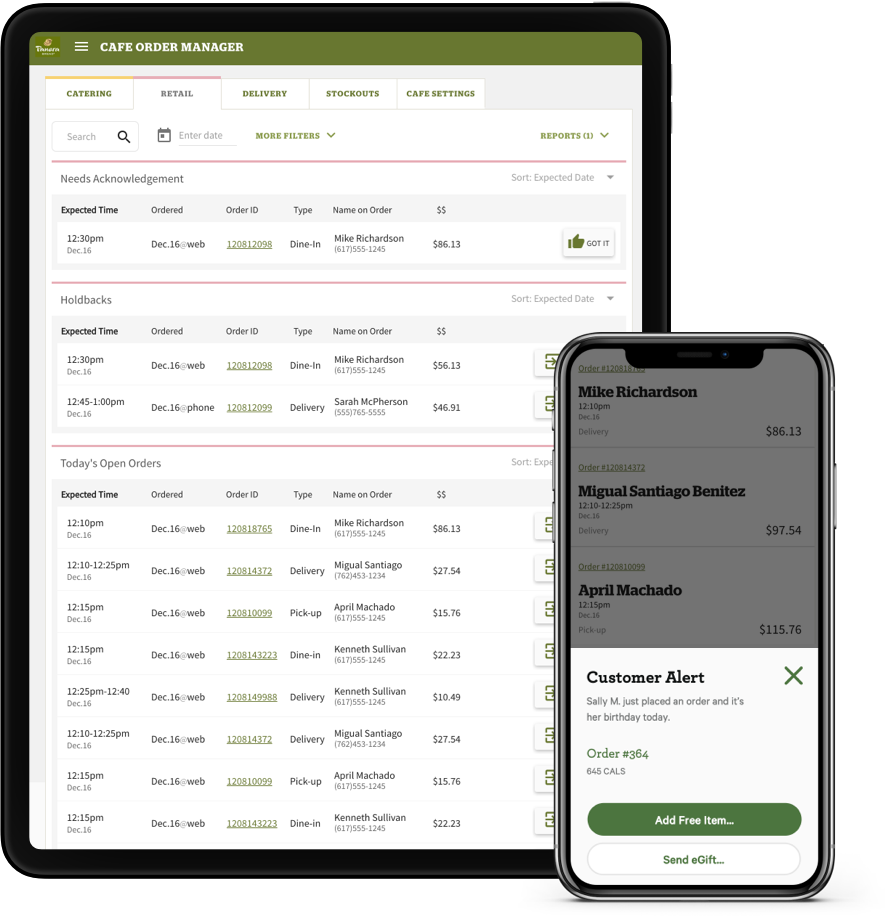
Operations teams in the restaurant business are under an overwhelming amount of pressure every single day. The job almost always consist of tackling the biggest problems at a blinding pace. Whiles that's necessary, it also comes at a cost. Sometimes it's necessary to step back and figure out what the process should be, not just what it needs to be tomorrow. Prototyping is an excellent way to push aside some of the day-to-day barriers and think more holistically while also delivering an artifact that can be used to accelerate future activities.
When bringing multiple teams together to deliver on a unified vision, prototypes are a helpful way to ensure we are all seeing the problem and solution in the same way. They're even more effective when you bring the stakeholders into a room to co-create the prototype at several touchpoints throughout the process. It fosters empathy, sharing of ideas, and – most importantly – ownership in the solution.
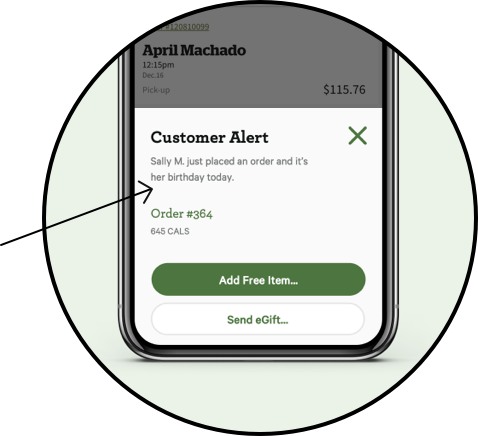 It's easy to see operational systems and even customer portals as a transactional utility that helps users accomplish a task...but they can be much more than that. Look for opportunities to enable customer moments that wouldn't have otherwise happened.
For Panera, maybe it's noticing the first order for new loyalty members so we can do something special, or getting ahead of issues and providing easy pathways and responses for feedback. In any case, you're ability to use these systems to deliver on special moments can turn into a brand superpower if done right.
It's easy to see operational systems and even customer portals as a transactional utility that helps users accomplish a task...but they can be much more than that. Look for opportunities to enable customer moments that wouldn't have otherwise happened.
For Panera, maybe it's noticing the first order for new loyalty members so we can do something special, or getting ahead of issues and providing easy pathways and responses for feedback. In any case, you're ability to use these systems to deliver on special moments can turn into a brand superpower if done right.